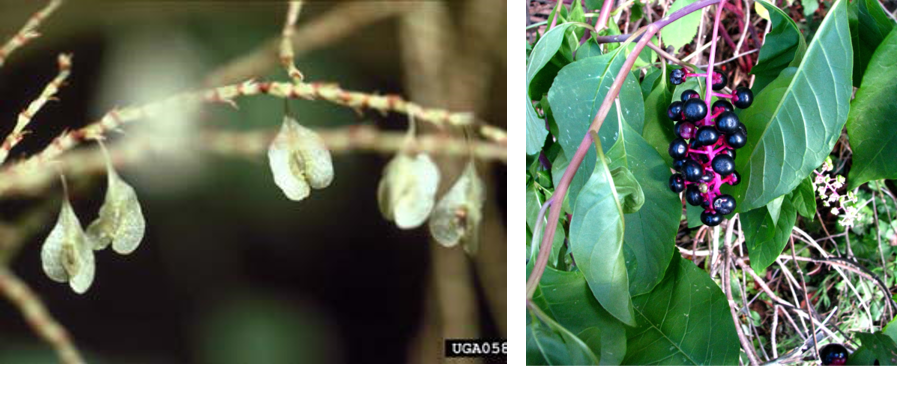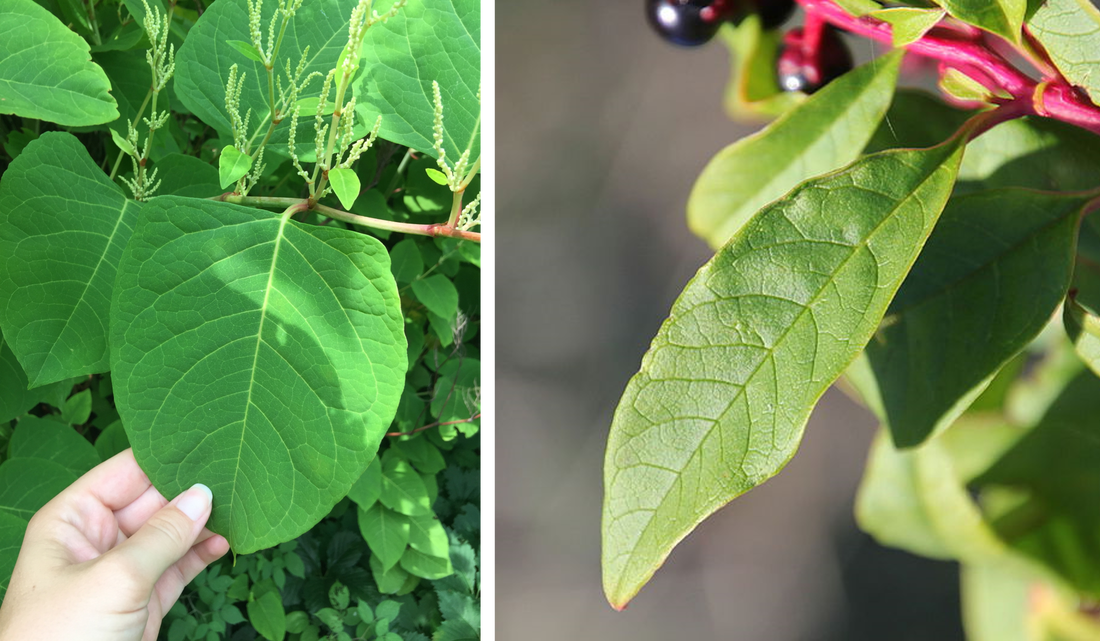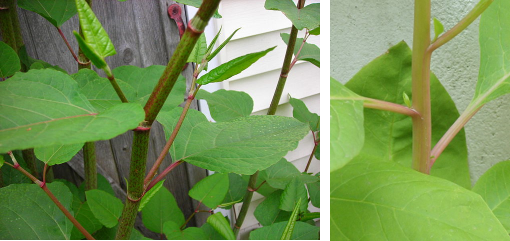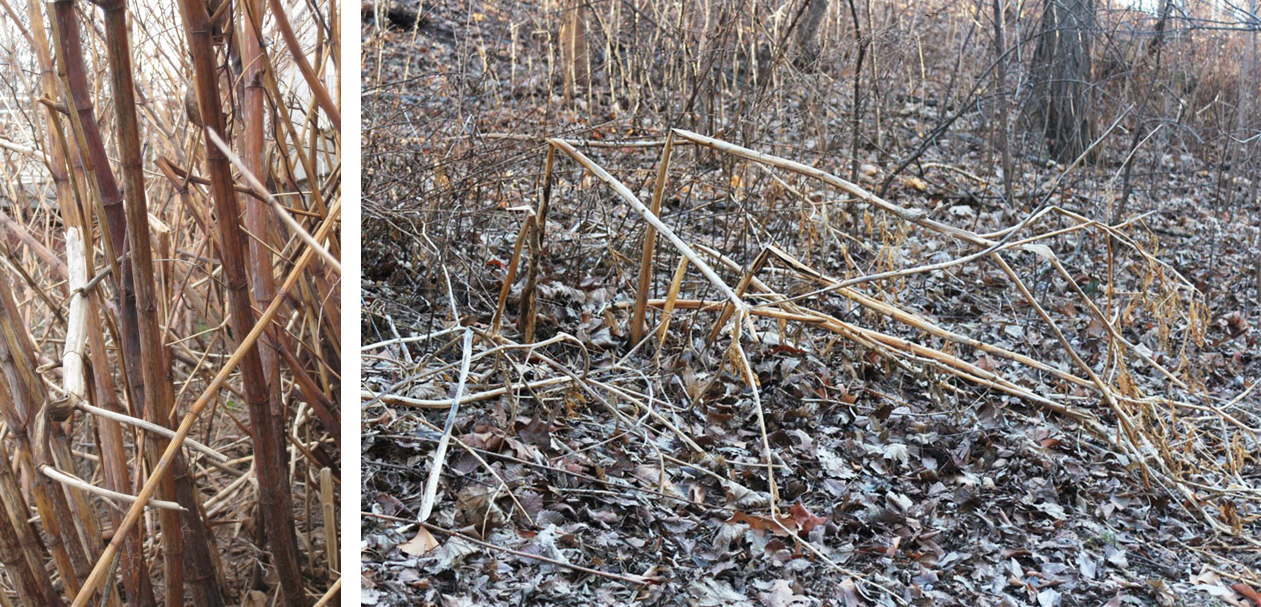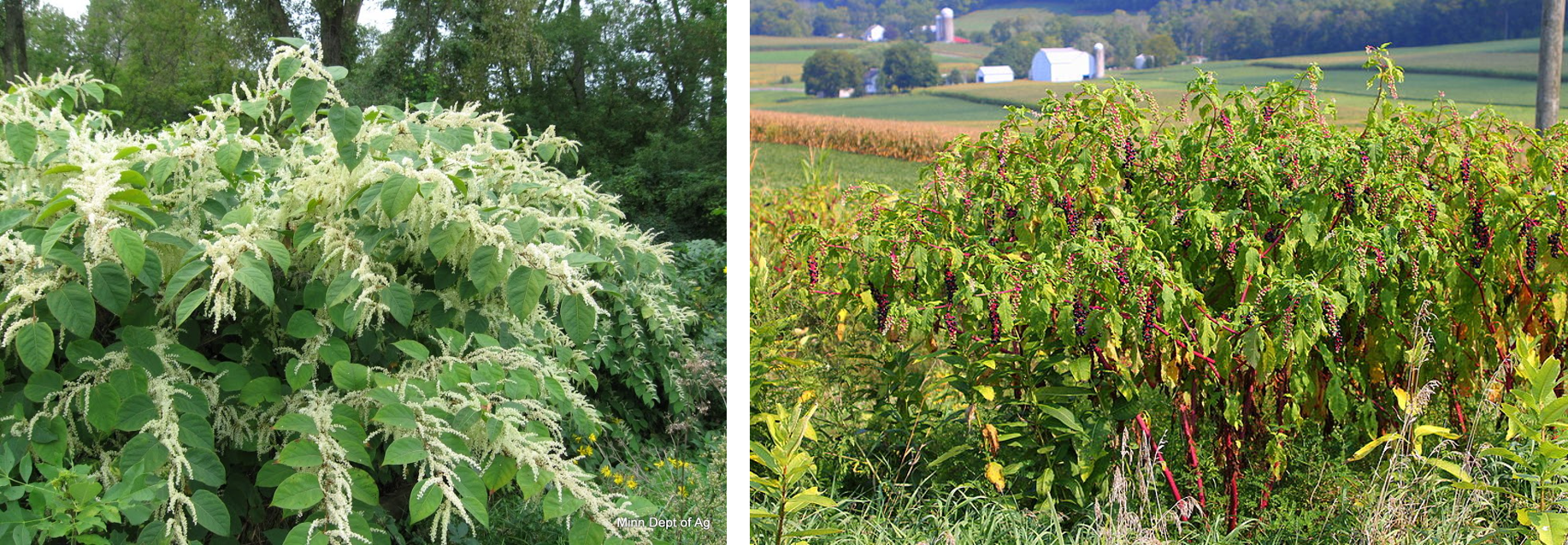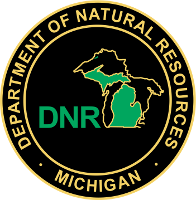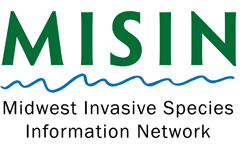|
Look-alikes: Invasive Knotweeds and Native Pokeweed
Invasive knotweeds (Fallopia spp.) are commonly confused with the native look-alike, pokeweed (Phytolacca americana). Below are some quick tips for telling these two species apart.
The easiest way to tell the two plants apart is by fruits, or lack thereof.
Invasive knotweeds (left): very rarely, you can find fruits on knotweed. Fruits dry, are three-winged, about 8-9mm, with dark, glossy seeds. Photo: Jil Swearingen, NPS Pokeweed (right): berries cover the plant in dark, glossy clusters in late summer. These berries are poisonous to humans, though birds value them. Photo: David Eickhoff While leaves can be variable, most knotweeds have rounder leaves than pokeweed.
Invasive knotweeds (left): new leaves start out red, turning green with red veins, before becoming completely green. Heart- or spade-shaped. Can be around 12cm long. Photo: Sarah Green Pokeweed (right): leaves are green on top, lighter underneath. Leaves are usually 20-35 centimeters long and oval, tapering on either end of the leaf. Crushed leaves can have an acrid smell. Photo: Gianni Careddu Living stems can be hard to tell apart (both are hollow), but there are a few clues.
Invasive knotweeds (left): distinctive purple specks on the stem and obvious nodes where leaves attach, looking somewhat like bamboo. Mature stems are entirely hollow. Photo: Ancatdubh43 Pokeweed (right): pinkish-red stem that starts pale and turns almost magenta. Smooth. Lacks the nodes that knotweed has where leaves branch off. Partially hollow. Photo: Dalgial When stems die back in winter (both wither after a frost), they can be easier to tell apart.
Invasive knotweeds (left): stems will redden, then die as it turns to winter, turning reddish-brown. Stems will usually stand through the winter, even with heavy snows. Photo: Liz Padalino Pokeweed (right): plants will die back after the first frost, stems bleaching white over time. Dead stems are "squishy," nearly always falling down under snow or even just over winter. Photo: Gardenista Adult plants can look similar, but have slightly different habits to the practiced eye.
Invasive knotweeds (left): most conspicuous during flowering (pictured). Spread clonally, making large hedge-like clumps or rows with many stems. Photo: Minnesota Dept. of Agriculture Pokeweed (right): most conspicuous during fruiting (pictured). Spreads by seed, creating many small clumps with just a few stems each that may be somewhat near each other or very far apart. Photo: JakeC Want to practice?
Try out the MISIN Species ID Training Module. |
|
| habitatmatters.org |
Contact US231-252-4148
3334 Veterans Drive Unit A Traverse City, Michigan 49685 |
Pleasant Peninsula Design, Habitat Matters 2017
